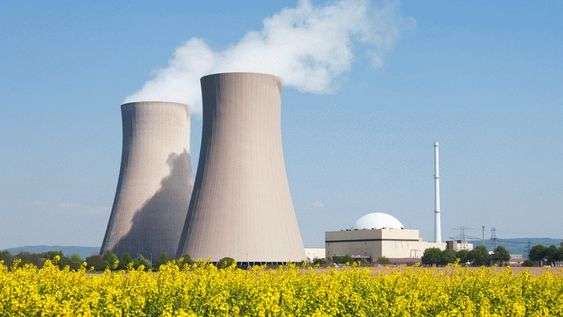Nuclear Energy Is the Future: Nuclear Power, Clean Energy, Energy Sources
Table of Contents
- Introduction
- Understanding Nuclear Energy
- 2.1. What Is Nuclear Energy?
- 2.2. How Nuclear Power Plants Work
- 2.3. Nuclear Energy vs. Fossil Fuels
- Benefits of Nuclear Energy
- 3.1. Low Greenhouse Gas Emissions
- 3.2. High Energy Output
- 3.3. Reliable and Stable Power Supply
- Challenges and Concerns
- 4.1. Nuclear Accidents and Safety
- 4.2. Nuclear Waste Disposal
- 4.3. Proliferation Risks
- Nuclear Energy Innovations
- 5.1. Advanced Reactor Designs
- 5.2. Nuclear Fusion: The Holy Grail
- 5.3. Small Modular Reactors (SMRs)
- Nuclear Energy Worldwide
- 6.1. Leading Nuclear Energy Producers
- 6.2. Global Expansion and New Players
- 6.3. Nuclear Energy Policy and Regulation
- Nuclear Energy and the Environment
- 7.1. Waste Management and Disposal
- 7.2. Nuclear Energy’s Carbon Footprint
- 7.3. Ecosystem Impact and Remediation
- The Future of Nuclear Energy
- 8.1. Nuclear Energy in a Clean Energy Mix
- 8.2. Investment and Research Initiatives
- 8.3. Public Perception and Education
- Conclusion: A Nuclear-Powered Future
1. Introduction
As the world faces the urgent need to transition to clean and sustainable energy sources, nuclear energy emerges as a prominent contender. In this comprehensive exploration, we delve into the realm of nuclear power, its inner workings, the advantages it offers, and the challenges it confronts. From advanced reactor designs to global expansion, we examine the potential of nuclear energy to shape the future of our energy landscape.
2. Understanding Nuclear Energy
2.1. What Is Nuclear Energy?
Nuclear energy is derived from the process of nuclear fission, where the nucleus of an atom splits, releasing a tremendous amount of energy. We provide an overview of this powerful energy source and its applications.
2.2. How Nuclear Power Plants Work
Understanding the operation of nuclear power plants is crucial. We explain the fundamental principles behind nuclear reactors and how they generate electricity.
2.3. Nuclear Energy vs. Fossil Fuels
Comparing nuclear energy to fossil fuels reveals stark differences. We assess the environmental impact, energy efficiency, and sustainability of nuclear power when contrasted with traditional coal and oil-based energy sources.
3. Benefits of Nuclear Energy
3.1. Low Greenhouse Gas Emissions
One of the primary advantages of nuclear energy is its low greenhouse gas emissions. We explore how nuclear power contributes to mitigating climate change.
3.2. High Energy Output
Nuclear reactors produce a substantial amount of electricity. We delve into the high energy output and reliability of nuclear power plants.
3.3. Reliable and Stable Power Supply
Nuclear energy provides a stable and consistent power supply. We examine the reliability of nuclear power and its role in meeting baseload electricity demand.
4. Challenges and Concerns
4.1. Nuclear Accidents and Safety
Nuclear accidents have raised significant concerns about safety. We discuss notable incidents, safety measures, and the continuous efforts to enhance nuclear reactor safety.
4.2. Nuclear Waste Disposal
The management of nuclear waste poses a complex challenge. We explore the methods and technologies used for nuclear waste disposal and the quest for long-term solutions.
4.3. Proliferation Risks
The potential for nuclear weapons proliferation is a global concern. We examine the risks associated with the dual-use nature of nuclear technology and international efforts to prevent nuclear weapons development.
5. Nuclear Energy Innovations
5.1. Advanced Reactor Designs
Advanced reactor designs offer improved safety and efficiency. We explore next-generation nuclear reactors and their potential to revolutionize the nuclear energy industry.
5.2. Nuclear Fusion: The Holy Grail
Nuclear fusion holds the promise of clean and virtually limitless energy. We delve into the science of nuclear fusion and the progress made in harnessing this extraordinary energy source.
5.3. Small Modular Reactors (SMRs)
Small modular reactors are gaining attention for their versatility and scalability. We examine the concept of SMRs and their potential applications in various settings.
6. Nuclear Energy Worldwide
6.1. Leading Nuclear Energy Producers
Several countries are at the forefront of nuclear energy production. We identify the leading nuclear energy producers and their contributions to the global nuclear landscape.
6.2. Global Expansion and New Players
The global expansion of nuclear energy continues, with emerging markets and new players entering the arena. We discuss the evolving dynamics of nuclear energy on the international stage.
6.3. Nuclear Energy Policy and Regulation
Government policies and regulations play a pivotal role in the nuclear energy sector. We explore the regulatory frameworks and policy decisions that shape the development and operation of nuclear power plants.
7. Nuclear Energy and the Environment
7.1. Waste Management and Disposal
Effectively managing nuclear waste is essential for the sustainability of nuclear energy. We assess the challenges and solutions associated with nuclear waste management and disposal.
7.2. Nuclear Energy’s Carbon Footprint
Nuclear energy’s carbon footprint is relatively low, but it is not without environmental impact. We examine the environmental considerations associated with nuclear power generation.
7.3. Ecosystem Impact and Remediation
Nuclear accidents can have far-reaching effects on ecosystems. We explore the impact of nuclear disasters on the environment and efforts to remediate affected areas.
8. The Future of Nuclear Energy
8.1. Nuclear Energy in a Clean Energy Mix
The integration of nuclear energy into a clean energy mix is a topic of debate. We discuss the role of nuclear power in achieving global clean energy goals.
8.2. Investment and Research Initiatives
Investment in nuclear energy research and development is vital for innovation. We highlight notable initiatives and collaborations aimed at advancing nuclear technology.
8.3. Public Perception and Education
Public perception of nuclear energy influences its future. We explore the importance of education and communication in shaping public opinion and fostering informed decisions.
9. Conclusion: A Nuclear-Powered Future
In conclusion, nuclear energy presents a compelling case as a significant component of our clean energy future. While it comes with challenges and concerns, ongoing advancements, safety improvements, and international cooperation hold the key to unlocking the full potential of nuclear power. As the world seeks sustainable and reliable energy sources, nuclear energy stands as a formidable contender in the pursuit of a cleaner and brighter tomorrow.
Do Follow Us On Twitter – https://twitter.com/Uniqverses708
We Have a Wide Range of Unique information For You On uniqverses.com
Please like, comment & Share if you want us to keep bringing these amazing and unique information for you.









